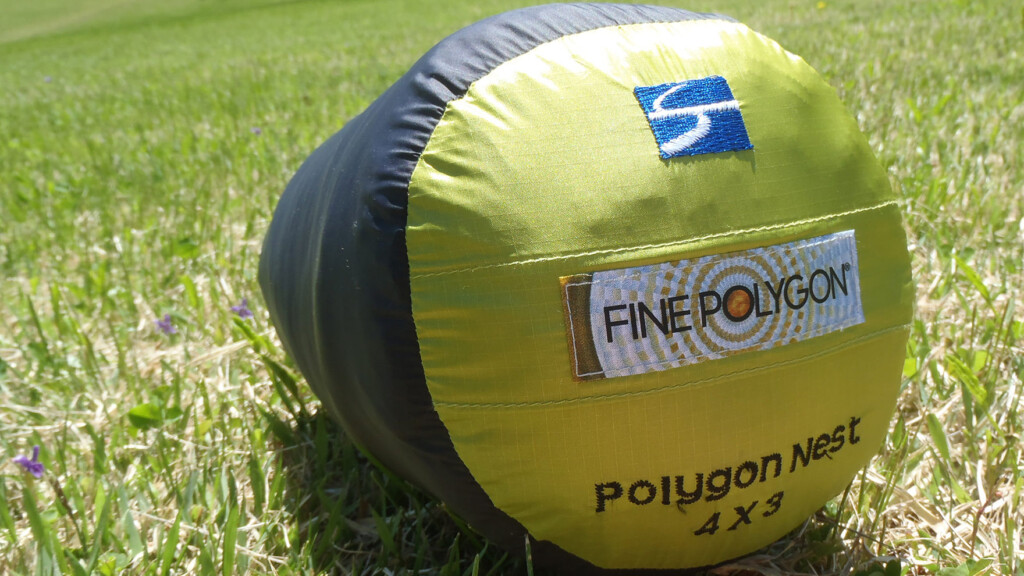
Review: Fine Track Polygon Nest - New possibilities for synthetic sleeping bags
When you hear the word "sleeping bag" that brings you to the mountains, what kind of thing do you think of?
I'm sure many people will think of models that use down. With its three key features: light, compact, and heat retention, it is positioned as an indispensable part of modern mountain climbing and hiking.
On the other hand, sleeping bags made of synthetic fibers have the advantage of being easy to maintain and keeping prices low, but they require a large amount of mass to provide heat retention, and as a result, they become heavy and bulky, so I think they often fall short of the option of "take it to the mountains."
However, Fine Track, a domestic manufacturer that continues to develop innovative gear, has developed a new heat-retaining material, Fine Polygon, and the Polygon Nest series that uses it, has introduced a completely new form that goes beyond the conventional wisdom of synthetic sleeping bags. This time we will thoroughly analyze the sleeping bag using the fine polygons.
table of contents
Detailed review
finetrack polygon nest (4x3)
Main Specifications and ratings
| item | Specifications and evaluation (mainly 4x3 models) |
|---|---|
| material |
|
| color |
|
| Supported temperature |
|
| weight |
|
| size |
|
| Variations |
|
| Features |
|
| Thermal insulation | ★★★★☆ |
| weight | ★★★★★ |
| Comfort | ★★★☆☆ |
| Portability | ★★★★★ |
| Functionality | ★★★★★ |
| Overall score | ★★★★☆ |
*The marks with ★ are impressions up until the comparison test are conducted, so please use this as a reference only.
This is amazing
Weight and portability
First off, this model is the standard size of a traditional synthetic sleeping bag.
You can see the difference in size at a glance. The optimum temperature range for both of these is almost the same, but the size is almost twice as different.
Here is an excerpt from manufacturer data, but the weight and specifications are as follows.
[Polygon Nest 4x3]
- Weight: 450g
- Lower limit temperature available: 7℃
- Height: Up to 185cm
- Storage size: Φ13cm x 26cm
[Polygon Nest 4x3 Short]
- Weight: 410g
- Lower limit temperature available: 7℃
- Height: Up to 165cm (for women)
- Storage size: Φ12cm x 24cm
This is a typical synthetic sleeping bag with the same temperature, weighs nearly 1kg, so it weighs about 40% lighter than conventional ones and is compact in storage size.
The reason why this weight can be reduced is that there is a major difference between the heat-retaining material and the structure. While traditional synthetic fibers are mainly made from cotton-like materials packed like down, polygon nest is made by stacking a special sheet of fine polygons, which is called fine polygons, to create a layer of air and create a heat-retaining structure, making it a minimum necessary weight.
I think it's enough to understand the logic, but when you touch it you will see that the sheet itself is thin and is it possible to do that? That's how I think. That's why it's innovative.
Thermal insulation
So what about when you actually try it? That said, I have actually been using a model that I owned in person since its release for about three years, so I have accumulated data perfectly. It looks a little big, but it's 6x4 (lower limit temperature 0°C). This weighs around 600g.
This time we used a 4x3 in the mountains at an altitude of 1,000m in May. The morning temperature was below 10°C.
To put it simply, although the insulation in dry conditions is slightly inferior to that of down, which is the same weight, personally I don't think it is that pronounced . I have never experienced the unexpected cold weather that I couldn't sleep with my previous use. The lineup is detailed according to temperature compatibility, so there are from low mountains to harsh winters, so you can get one that suits your season and your constitution.
Functionality, comfort, portability
Next, we will focus on three points: strength against water, comfort, and ease of storage.
Strength against water
This is an important point for those who are involved in water activities such as streams. Down sleeping bags, the standard for mountain climbing sleeping bags, have the weakness of being weak to water, and when they get wet, the loft (swelling) of the feathers inside will collapse, making them unable to provide heat retention. Therefore, to compensate for this risk, it is necessary to use various techniques to cover the wetting process, such as applying water-repellent finish to the feathers themselves, using the same fabric as rainwear as rainwear, and using sleeping bag covers.
On the other hand, traditional synthetic sleeping bags generally have the great advantage of being resistant to water and less heat retention than down. This polygon nest also has a sheet structure that makes it difficult to keep water in. This makes it difficult to keep water in, making it difficult to reduce heat retention and dries quickly.
In the past, when I was actually wet due to condensation, I used a feather sleeping bag and felt the contact surface was cold, so I couldn't sleep, but when I used Polygon Nest in the same situation, although I felt the coldness, it didn't seem to affect my sleep, and the heat retention when it was wet was as good as I could.
There is data from manufacturers that even if it gets wet, it will dry out to a level that is about half the speed of conventional synthetic cotton, and it is not a problem for use, but I remember being surprised that when it actually gets wet due to condensation, it can be hung on a tent or on a rope to dry it in the sunlight, allowing it to dry without taking too long.
Also, anything will get dirty if you continue to use it. If the bedding is dirty, it will slow down and you won't get a good sleep. In such cases, washing a down sleeping bag is delicate and requires a little effort, so it is not possible to wash it every time. On the other hand, synthetic sleeping bags are made from chemical fibers, making them easy to wash, and their water-resistant properties are also useful besides use.
As shown in the photo below, a hanging group is made, and it is made to be hanged on site using carabiners and other items to make it easy to dry.
The storage bag also includes detailed instructions on washing and handling. I'm also happy with this little consideration.
Sleeping comfort
The next thing to worry about is the comfort. Even though we know the heat retention properties, what does it actually look like when you use it? That's the point. The bottoms at the feet are made to be wide, making it very easy to move your arms and legs. It doesn't feel like it's too tight.
The zipper flap is also a magnet, making it very easy to open and close.
The only thing that caught my eye was probably the characteristic of the material, but I can feel the unique texture. It feels like a slightly smooth sound when you move. When you roll over in bed, that feeling becomes a little more noticeable, and I don't mind, but I think that depends on individual differences.
About storage
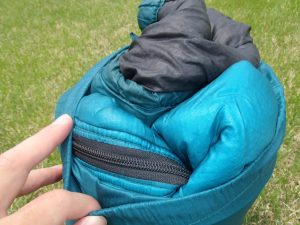 Personally, this is the number one point I want to be concerned about. We will check whether the storage in the included staff bag will go smoothly. A typical synthetic sleeping bag is that the texture of the insulation material is so strong that it cannot be stored unless it is folded in. This is a bit of a hassle... (When it comes to storing your sleeping bag, it's also the standard method of replacing it with a staff bag sold separately, but there are also many different types and ways to choose it, so I think I'll take another opportunity.)
Personally, this is the number one point I want to be concerned about. We will check whether the storage in the included staff bag will go smoothly. A typical synthetic sleeping bag is that the texture of the insulation material is so strong that it cannot be stored unless it is folded in. This is a bit of a hassle... (When it comes to storing your sleeping bag, it's also the standard method of replacing it with a staff bag sold separately, but there are also many different types and ways to choose it, so I think I'll take another opportunity.)
What about polygon nest? It's not a problem if you push it in casually from the foot. It was shocking to be able to do this with a synthetic sleeping bag, with the same feeling as a feather sleeping bag. I think it's a great feature that saves a lot of effort.
Price aspect
Conventional synthetic sleeping bags often have a price range of around 10,000 yen, so it is certainly a high price for synthetic fibers, and it is close to feathers. However, it can be said that the cost performance is not bad for this price, as it has performance that could not be achieved with conventional synthetic fibers.
Summary of recommended points
- Water resistant, light, and heat retention, is fast drying and portability, and is all-around performance that matches any activity, from water sports that are wet to mountain climbing, light-conscious hiking and climbing
- Washing and other maintenance is easier than down
- Storage is as easy as a down sleeping bag
I'm curious about this
- The unique texture and sound that comes with it when you go inside makes you feel like you're inclined to like it. It may not suit people who are particular about sleep or those who want the same sensation as feather sleeping bags.
- The cost (price) is high for synthetic fibers, and may be a bit harsh for those looking for cheap ones. However, considering the functionality overall, it is cost-effective. I think it's how you judge that point.
Summary: What kind of activities do you recommend?
First of all, it will be a great companion for long trail hiking, from serious climbing to long-distance long trails, which require functionality and toughness to use. It is also great for activities such as climbing overnight, UL hiking, and cycling trips, and quick-drying and the heat retention is not easily lost even when wet, making it perfect for activities such as climbing streams, playing with water, and getting wet. Once you reach this point, if you don't have a strong preference for sleeping bags, it seems like it will suit almost anything.
Also, since it has a different advantage to feather sleeping bags, it's a good idea for those who already have a lot of sleeping bags to have one of the different ways to suit the season and activities. Furthermore, it is easy to use, so I think beginners should make it their first choice.
This model is made by taking out only the good points of feathers and synthetic fibers and combining them together. These synthetic insulation materials created by human wisdom and passion are still full of possibilities and are a very interesting genre. In this context, this Polygon Nest is a new generation sleeping bag that has been released with innovative performance. This is a recommended gear that can be used for all kinds of active use and is attractive to cover a wide range of people, from advanced users to beginners!
Irisawa Takashi
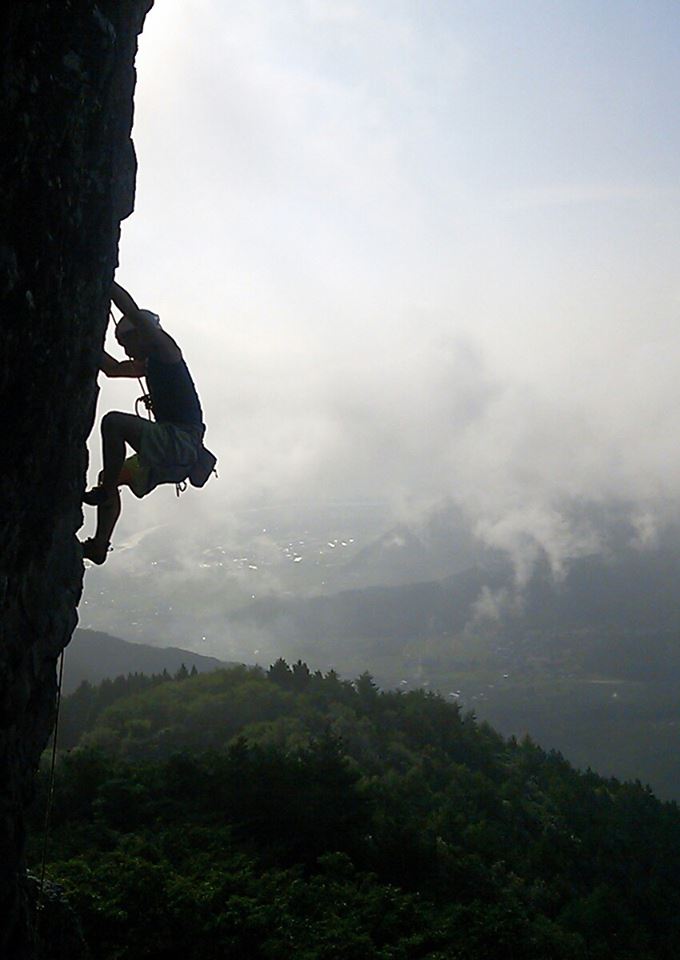 Born in Gunma Prefecture. I have been in 20 years since I started full-scale mountain climbing in high school mountain clubs. From winter mountains to climbing in general, to trail running, we practice poorly liking those around the world. He has experienced expeditions overseas, climbing, and developing domestic ice climbing areas.
Born in Gunma Prefecture. I have been in 20 years since I started full-scale mountain climbing in high school mountain clubs. From winter mountains to climbing in general, to trail running, we practice poorly liking those around the world. He has experienced expeditions overseas, climbing, and developing domestic ice climbing areas.
He has a background as a mountain hut manager and shop staff, and is also a certified mountain climbing guide, so he is well-versed in the world of mountains. We have a track record of handling and providing advice on many gears up to now. An unparalleled (particularly maniacal) gear nerd.
Looking for reviewers
Outdoor Gearzine is always looking for members who love the outdoors and would like to write reviews about outdoor equipment. For more information, please this REVIEWERS page !






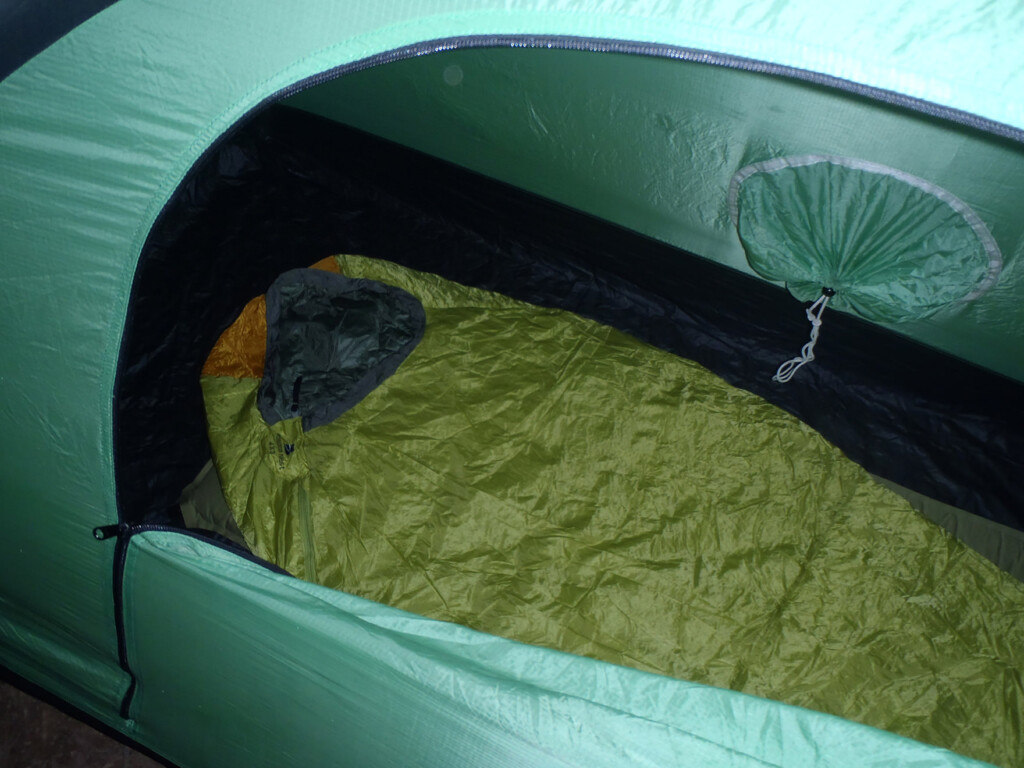
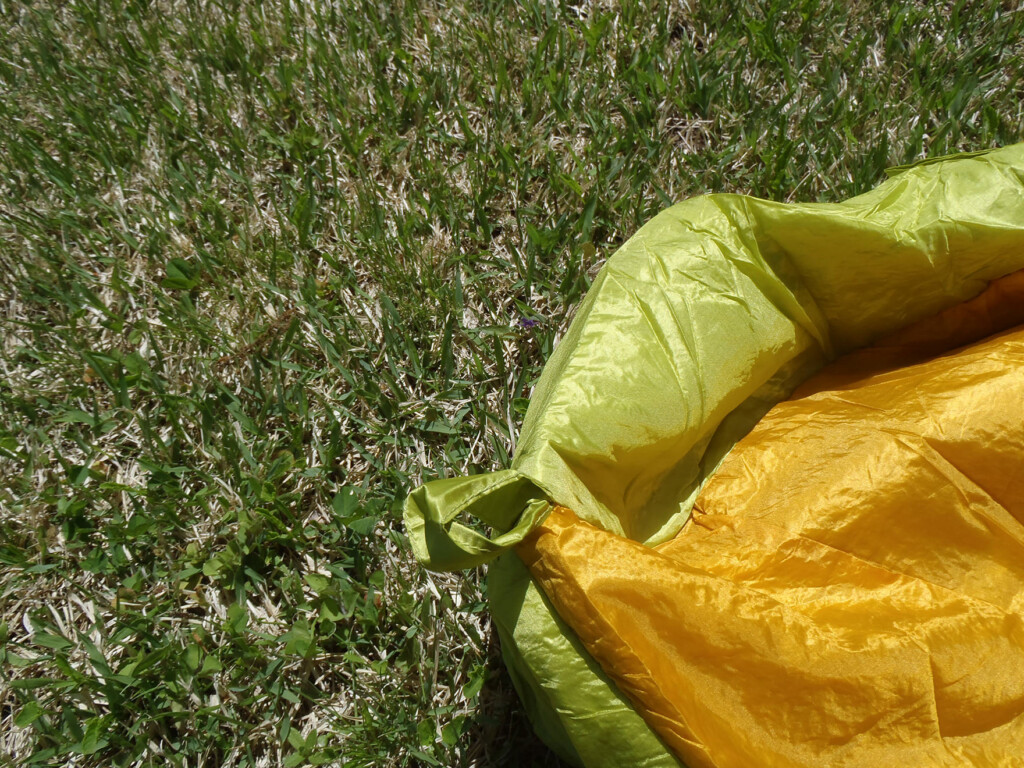
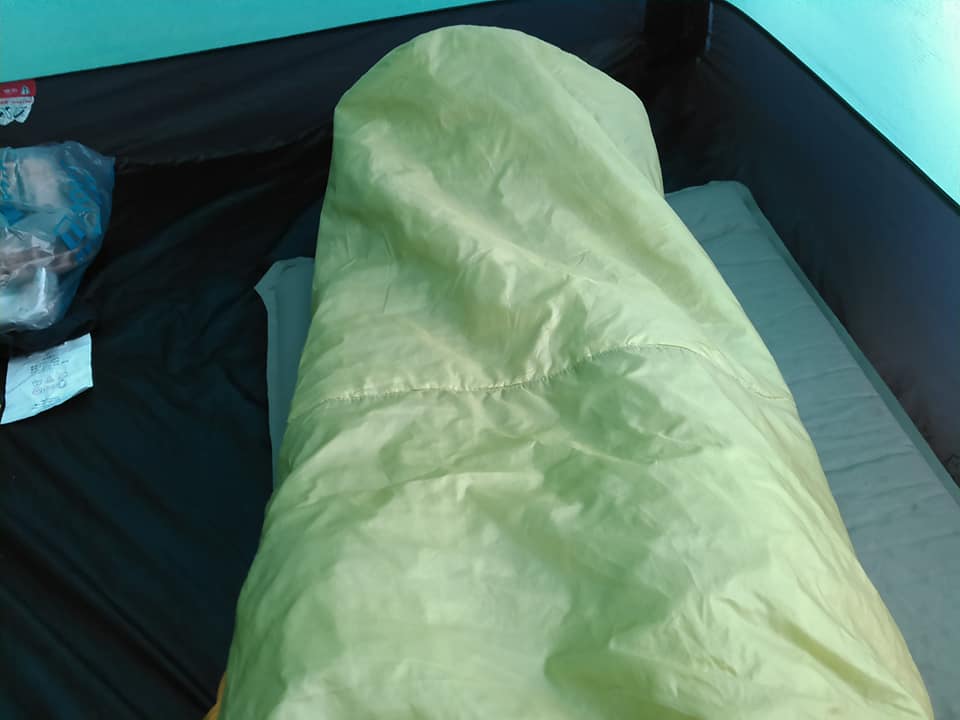
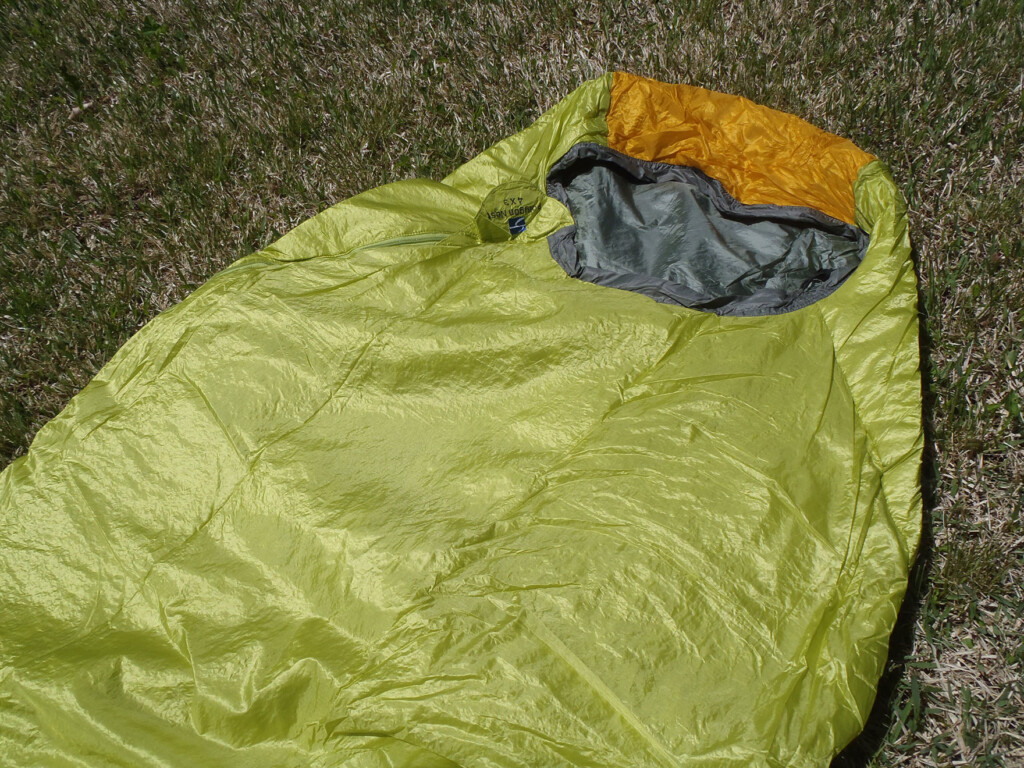

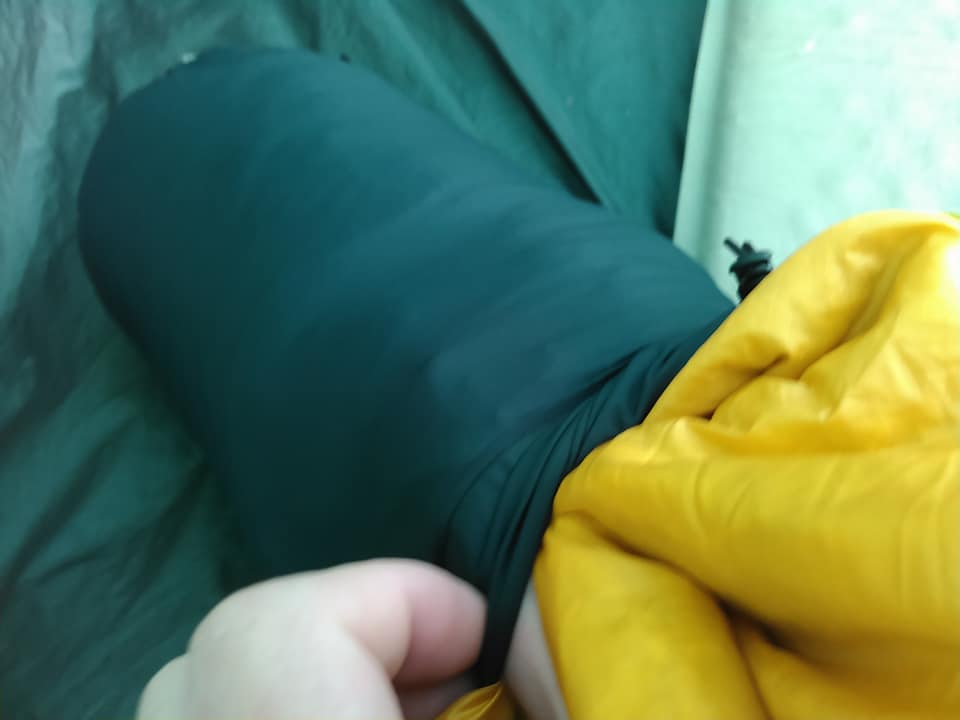
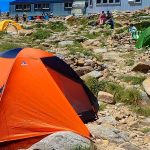 Review: finetrack Kamina Dome 2 A new standard with a stable form, featuring the latest materials and reliable technology
Review: finetrack Kamina Dome 2 A new standard with a stable form, featuring the latest materials and reliable technology Review: Montbell Down Hugger 800 Half Length A unique lightweight sleeping bag that eliminates waste has a unique and easy-to-use trick that Montbell has.
Review: Montbell Down Hugger 800 Half Length A unique lightweight sleeping bag that eliminates waste has a unique and easy-to-use trick that Montbell has. Review: Therm-a-Rest Antares HD Sleeping Bag A comfortable sleeping bag with a touch of skill and skill that I got from "Sekaimon".
Review: Therm-a-Rest Antares HD Sleeping Bag A comfortable sleeping bag with a touch of skill and skill that I got from "Sekaimon".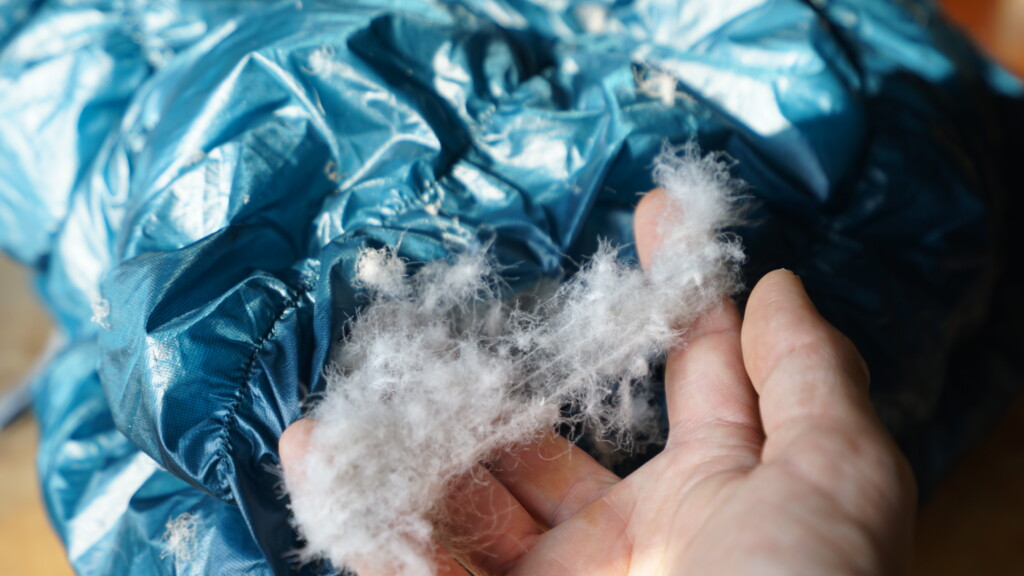 Review: Looking inside the 900 mont-bell's latest sleeping bag, Seamless Dry Down Hugger 900, I was able to see what was impossible and what was possible.
Review: Looking inside the 900 mont-bell's latest sleeping bag, Seamless Dry Down Hugger 900, I was able to see what was impossible and what was possible.